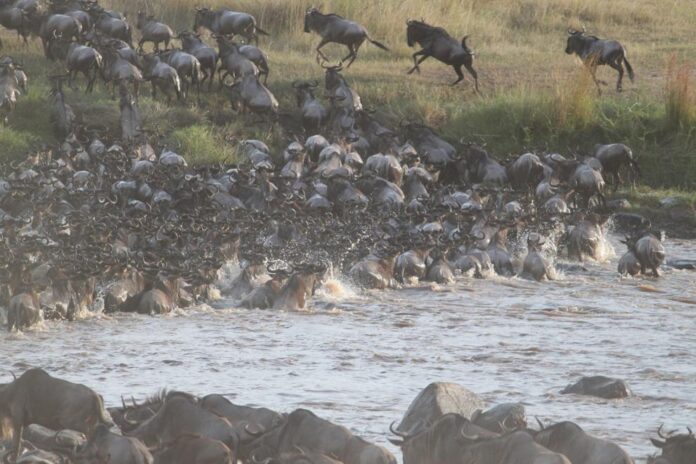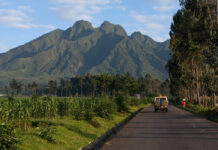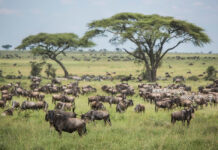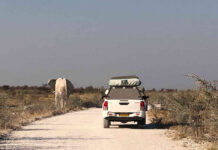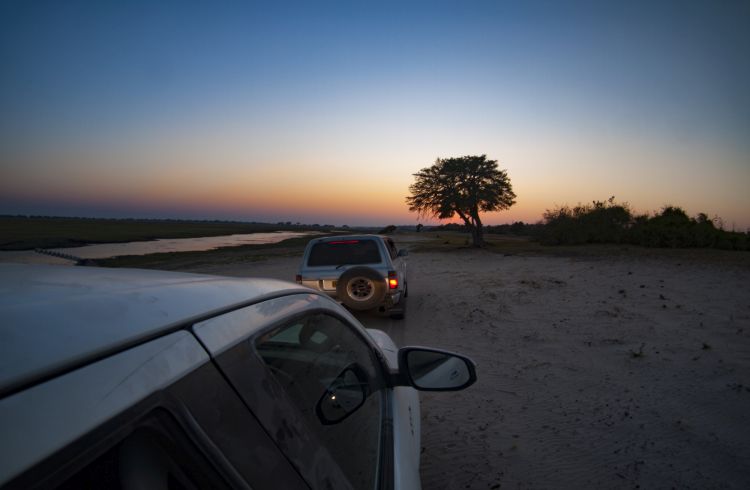Meeting the mountain gorillas and watching the wildebeest migration is one of the best safari combinations offering tourists a visit to two countries that is Tanzania and Rwanda, this safari is ideal for tourists interested in mountain gorillas and wildlife. In Rwanda you are to tour the amazing volcanoes national park which is a home to mountain gorillas and in Tanzania you get to visit Serengeti national park a remarkable national park experiencing the great wildebeest migration.
This journey shows you two of the greatest highlights of the natural world. Meet the Mountain gorillas of Volcanoes National Park in Rwanda, with a gaze so much like our own that it’ll be an experience you’ll never forget. The Serengeti in Tanzania, the Great Wildebeest Migration attracts thousands of nature enthusiasts, filmmakers and photographers who come from around the world to witness one of Africa’s most dazzling cycles of life.
Experience Wildebeest Migration in Tanzania
Location
The Serengeti National Park in Tanzania is the primary location for the wildebeest migration. The park covers an area of approximately 14,750 square kilometres and is renowned for its diverse ecosystems, including vast grasslands and riverine forests. The park is one of the top destinations that visitors do not miss on a Tanzania safari.
Migration Route
The migration is a circular journey that spans the Serengeti in Tanzania and the Maasai Mara in Kenya. The wildebeest, along with zebras and other herbivores, follow a clockwise route, moving in search of fresh grazing and water. The circuit takes the animals from the Ngorongoro Conservation Area (although not into the Crater itself) in the south of the Serengeti in Tanzania, up through the Serengeti and across into the Masai Mara in Kenya and back again.

The great migrating herd offers plenty of prey for the different predators living within the areas that this herd matches through among which are big cats like lions, leopards and cheetahs; hyenas and crocodiles. The wildebeest migration is one of the most amazing events one should never miss out, nothing is thrilling like watching these animals in big numbers running up and down in the grasslands and crossing rivers, it gives an unforgettable experience in the wild. The Great Migration is the largest herd movement of animals on the planet. In fact, with up to 1,000 animals per km², the great columns of wildebeest can be seen from space.
The numbers are astonishing: over 1.2 million wildebeest and 300,000 zebras along with topi and other gazelle move in a constant cycle through the Serengeti-Mara ecosystem in search of nutritious grass and water. Guided by survival instinct, each wildebeest will cover 800 to 1,000km on its individual journey along age-old migration routes. Hungry predators including lion, leopard, cheetah, hyena, wild dog and crocodiles make sure only the strongest survive in this natural spectacle also known as ‘the greatest show on Earth.’
The three groups of migrant grazers have different grass-eating habits: as one group eats the top of the tallest grass, the next group will eat away some of the medium-height grass, until finally it is almost completely eaten, and the herds move on. This means each group sticks to their own kind with only a small overlap in their distributions. The grasses of the plains have the highest protein content in the whole of the Serengeti, as well as being high in calcium.
Timing: The migration is an annual event that depends on rainfall patterns. Generally, it starts in the southern Serengeti around December and January, where the wildebeest give birth to their calves. As the dry season progresses, the herds move northward, crossing the Grumeti and Mara rivers and entering the Maasai Mara around July and August.
Highlights:
River Crossings: Witnessing the wildebeest herds crossing crocodile-infested rivers, such as the Mara River, is a spectacular and sometimes dramatic event.
Predator Action: The migration attracts a high concentration of predators, including lions, cheetahs, and hyenas, making it an excellent time for wildlife enthusiasts and photographers.
Great Migration Camps: Accommodations such as mobile tented camps follow the migration, providing a unique and immersive experience in the heart of the action.
Planning Tips:
- Obtain the necessary permits for entering the national park.
- Consider guided safaris or tours led by experienced guides.
- Choose accommodations that offer a strategic location for optimal migration viewing.
Meet the Mountain Gorillas in Rwanda
Going on a Rwanda safari is one of the best adventure journeys you can ever take while in East Africa. It is the most accessible destination where you can meet the mountain gorillas upclose and personal.

Location
Gorilla trekking takes place in the Volcanoes National Park. This park is part of the Virunga Massif, a chain of volcanic mountains that also extends into Uganda and the Democratic Republic of Congo.
Gorilla Families
The Volcanoes National Park is home to several habituated gorilla families, each with its own dynamics and individuals. The habituation process involves acclimating the gorillas to human presence, enabling researchers and tourists to observe them closely. The families are known as Susa, Igisha, Karisimbi, Sabyinyo, Amahoro, Agashya, Kwitonda, Umubano, Hirwa, Bwenge, Ugyenda and Muhoza.
Hikes up to their various locations can last anything from 30 minutes to four or more hours, reaching an altitude of between 2,500m and 4,000m. Porters are available to carry backpacks and cameras, as well as to offer a helping hand along the route.
The annual Kwita Izina gorilla naming ceremony is a special time to visit the Volcanoes National Park, with guided tours leading up the main event providing an opportunity to meet park staff and conservationists, attend cultural evenings and a celebration in Musanze.
Mountain Gorilla Trekking Experience
The unique opportunity to see gorillas in their natural habitat is unforgettable, some even say life changing. Encounters with gorillas as they go about their daily lives are carefully managed, with expert trackers and guides leading small groups of tourists up bamboo-covered slopes to spend a precious and awe-inspiring hour just a few feet away from the gentle creatures.
The largest living primate, gorillas are spread across much of the equatorial African rainforest. Broadly speaking, the species is split into lowland gorillas and mountain gorillas. At the latest count, there are approximately 1,000 mountain gorillas in the wild, with 604 in the Virunga Massif.
There are twelve gorilla families living in the Rwanda’s Volcanoes Park, which are fully habituated, with a few others habituated solely for scientific research. The groups, or troops, consist of at least one silverback along with several females and youngsters. The troops are somewhat fluid in composition, but tend to stick to a preferred area. They are constantly monitored and protected by park rangers, with each group coming into contact with tourists for a strict maximum of one hour per day.
Permits
Six tracking permits are issued per troop per day, meaning the encounter is as intimate and as unobtrusive as possible. With only 96 permits available each day in Rwanda, it is highly recommended to book in advance, either online or via a reputable tour operator.
Visitors gather at the Volcanoes National Park headquarters in Kinigi at 7am, and are allocated a family group on the day according to fitness levels, as well as being briefed on protocols and rules for visiting the gorillas.
Timing:
Gorilla trekking is available year-round, but the dry seasons from June to September and December to February are considered more comfortable for trekking due to less rainfall and clearer paths.
Highlights:
Mountain Gorillas: Rwanda’s Volcanoes National Park is one of the few places in the world where you can trek to see mountain gorillas in their natural habitat.
Scenic Beauty: The trek itself offers stunning views of lush forests, volcanic landscapes, and, on clear days, distant views of the Virunga volcanoes.
Conservation Impact: The fees from gorilla trekking permits contribute significantly to the conservation of these endangered species and their habitats.
Planning Tips:
- Gorilla trekking permits are limited and should be booked well in advance.
- Follow guidelines for gorilla trekking etiquette, such as maintaining a safe distance and minimizing noise.
- Wear appropriate clothing and hiking gear for the trek, and be prepared for varying weather conditions.
Conclusion
Both experiences the wildebeest migration in Tanzania and gorilla trekking in Rwanda offer unparalleled opportunities to connect with nature and witness some of the most remarkable wildlife spectacles on the planet.

